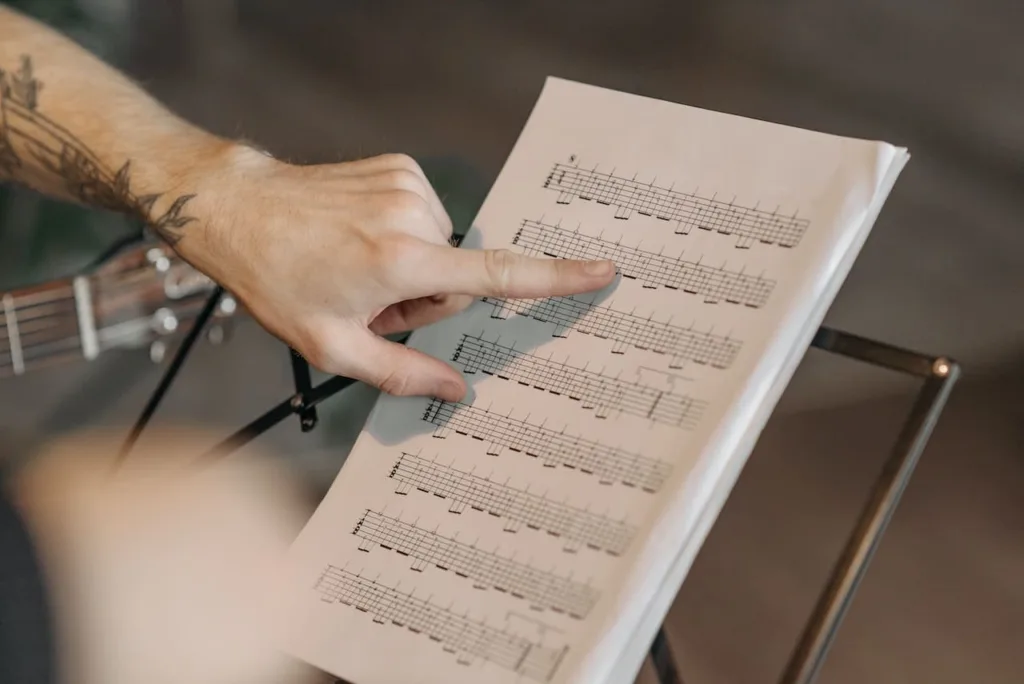Master Guitar Chords in 7 Days: Unlock Your Inner Rockstar

Table of Contents
Introduction
Welcome to our comprehensive guide on mastering guitar chords in just 7 days. If you’ve ever dreamt of becoming a rockstar and impressing your friends with your guitar skills, then you’re in the right place. In this article, we’ll provide you with a step-by-step plan to help you learn and master guitar chords quickly and effectively. So, grab your guitar, get ready to rock, and let’s dive in!
Day 1: Getting Started

Understanding the Basics
Before we jump into learning specific guitar chords, it’s essential to familiarize yourself with the basics of guitar playing. This includes understanding the different parts of the guitar, how to hold it correctly, and how to strum the strings. By developing a solid foundation, you’ll set yourself up for success as you progress through the following days.
Tuning Your Guitar
To ensure that your chords sound crisp and in tune, it’s crucial to tune your guitar correctly. There are various methods for tuning a guitar, including using a digital tuner, a tuning app, or tuning by ear. Whichever method you choose, make sure your guitar is in tune before moving forward.
Basic Open Chords
Open chords are the first chords beginners should focus on. These chords involve playing one or more strings without any fretting. Some essential open chords to start with include the C, G, D, A, and E chords. Practice transitioning between these chords, ensuring each note rings out clearly.
Day 2: Expanding Your Chord Vocabulary

Barre Chords
Barre chords are moveable chords that allow you to play the same chord shape in different positions on the guitar neck. These chords may be a bit challenging for beginners, but they are a significant step towards becoming a guitar virtuoso. The F major and B minor chords are excellent examples of barre chords. Practice applying pressure evenly across the fretboard to ensure clean and clear sounds.
Major and Minor Chord Progressions
Understanding chord progressions will greatly enhance your ability to play and write songs. Start by practicing common progressions, such as the I-IV-V (one-four-five) progression in the key of C major. Experiment with different progressions to develop your musical creativity and gain a deeper understanding of how chords work together harmoniously.
Day 3: Mastering Advanced Techniques

Fingerpicking
Once you’ve built a solid foundation in chords, it’s time to explore fingerpicking. This technique involves plucking individual strings with your fingers, creating intricate melodies and rhythms. Begin with simple patterns and gradually increase the complexity as you become more comfortable.
Strumming Patterns
To add depth and variety to your playing, learn various strumming patterns. Experiment with different rhythmic patterns, accents, and dynamics to create unique sounds. Practice strumming patterns in conjunction with different chord progressions to develop your sense of rhythm and timing.
Day 4: Enhancing Your Skills
Power Chords
Power chords are commonly used in rock and metal genres to create a heavier and more aggressive sound. These chords consist of only two or three notes and are movable along the fretboard. Practice power chords in different positions, exploring their versatility and incorporating them into your playing.
Barre Chord Variations
Expand your barre chord knowledge by learning different variations and inversions. Experiment with major, minor, seventh, and suspended chord shapes to add color and complexity to your playing. As you become more proficient, you’ll discover new ways to express yourself and captivate your audience.
Day 5: Putting It All Together

Song Transcription
Choose a song you love and challenge yourself to transcribe it for the guitar. Analyze the chord progressions, strumming patterns, and any additional techniques used in the song. Transcribing songs not only helps improve your playing but also enhances your ear training and musical comprehension.
Improvisation
Developing your improvisational skills allows you to create melodies on the fly and express your musical ideas freely. Start by experimenting with scales and improvising over simple chord progressions. Gradually increase the complexity and explore different genres to expand your musical repertoire.
Day 6: Refining Your Technique
Vibrato and Bending
Vibrato and bending are essential techniques for adding emotion and expression to your guitar playing. Practice bending strings to reach different pitches, and experiment with vibrato techniques to add a touch of soul to your melodies. These techniques require practice and precision, but they can truly elevate your guitar playing to the next level.
Rhythm and Lead Playing
Developing both your rhythm and lead playing skills is crucial for becoming a well-rounded guitarist. Dedicate time to honing your strumming and chord progressions while also working on scales, licks, and solos for lead playing. Balancing these two aspects will enable you to play with other musicians confidently and tackle various musical styles.
Day 7: Refining Your Sound
Effects and Pedals
Experimenting with guitar effects and pedals can shape your sound and take your playing to new heights. Distortion, delay, reverb, and wah-wah are just a few examples of effects you can incorporate into your setup. Research different effects pedals, try them out, and discover the combinations that suit your playing style.
Recording and Performing
Recording your guitar playing and performing in front of others are essential steps towards becoming a true rockstar. Set up a simple recording setup to capture your progress and share it with others. Additionally, seek opportunities to perform live, whether it’s at open mic nights, jam sessions, or even forming a band.
Conclusion

Congratulations on completing our 7-day guide to mastering guitar chords! By following this comprehensive plan, you’ve taken significant steps towards unlocking your inner rockstar. Remember, consistent practice, dedication, and a love for music are key to becoming a skilled guitarist. Keep pushing your boundaries, exploring new techniques, and never stop rocking!

Important minutes for a beginner to start and build the enthusiasm.